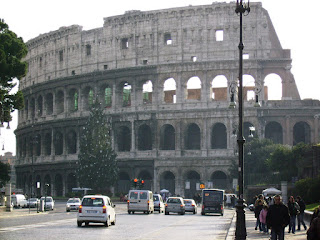There is a slitghtly contrived structure. Each chapter has a first part which is a sort of tourist guide to the place where the vanished kingdom originated followed by part two, a lengthy history of the kingdom and part three, which explores the kingdom's heritage.
Nevertheless this is a fascinating book.
- He starts with the Pyrennean kingdom of the Visigoths with a brief nod to the Da Vinci Code.
- Then he plunges into the Dumbarton-based realm of Alt Clud (Clydesdale) with another nod to King Arthur.
- He then traces Burgundy (linked to the Nibelungenlied) from the Danish island of Bornholm across Europe to a kingdom, duchy and county in southern France (including the Dauphine region whose ruler really did adopt a Dolphin as his badge and which later was sold to the French heir to the throne, the Dauphin) whose various acquisitions are later dispersed to France, Switzerland, Belgium, Holland and Germany leaving only the remnant of Luxembourg.
- The fourth kingdom of Aragon is linked to El Cid and St George. He carefully steers away from the obvious conclusion that the demise of Aragon, centred on Barcelona and therefore sustained by Mediterranean trade and an empire including the Balearics and Sicily, was due to the economic repositioning of Spain towards its trans-Atlantic possessions.
- He is cruel about modern day Byelorussia, a post-communist Communist republic, that once united with Lithuania in the kingdom/ grand duchy of Litva.
- His description of Byzantion is less history and more polemic against historians. He doesn't think much of Istanbul's Nobel-Prize-winning author Orhan Pamuk but he is much angrier about Gibbon whose Decline and Fall disposes of Constantinople in a single chapter. Yes, but Davies has spent 80 pages on Litva's 500 years and a breathtaking 16 pages on Byzantion's 1,153 years. A case of the pot and kettle, I believe.
- Borussia is really Prussia (why can't he use the normal names; he seems deliberately obscure). He likes to tantalise with obscurity: on page 364 Davies tells us that Saxon King August the Strong's "amorous adventures have gained him a place in the Guinness Book of Records" but he doesn't say why, not even in a footnote!!! (Wikipedia claims he had up to 382 illegitimate children.)
- Sabaudia (Savoy) was ruled by a single dynasty from 1033 until the last Italian king was deposed in 1946 (although after seceding Savoy itself to France in 1860). One impressive Count of Savoy not only got himself made Duke but after his wife and eldest son died was elected (anti)pope; his second son succeeded him and acquired the Shroud for Turin (bequeathed to the Roman Catholic church only by the last king of the dynasty).
- Galicia which was brought into existence by the Austro-Hungarian empire from bits of Poland and the Ukraine and then dismembered following WWI
- Etruria which was both brought into existence and dissolved by Napoleonic decree; Davies is rather more interested in the dynastic histories of the Bourbons and the Bonapartes than in this Tuscan state.
- When he chats about Rosenau, known to most as Saxe-Coburg-Gotha, he spends almost all the time talking about the most famous resident, Prince Albert, and the machinations of the SCG dynasts whose Leopold not only married the Prince Regent's daughter and would have become king of England had she survived childbirth but was also offered but declined the throne of Greece, became King of the Belgians, and arranged the marriage of his niece Victoria to his nephew Albert thus spreading his tentacles across the crowned heads of almost all of Europe. I was also fascinated to learn that Saxe-Coburg soup was made from Albert's favourite Brussels sprouts. Here is the recipe!
- The fate of Montenegro (he calls it Tsernagora) was interesting: it was the only Allied (and therefore victorious) state to vanish after the First World War. Having been occupied by Austro-Hungary the King and Government were in exile; when the Austrians collapsed the Serbs moved in and manipulated matters so that the Allies at Versailles found it easier to assume that the Montenegrin population had voted to join Serbia. Montenegro has now re-assumed independence from Serbia.
- Carpatho-Ukraine ('Rusyn' - Davies) lasted nearly a whole day. They were tagged on to Slovakia as part of Czecho-Slovakia after the 1919 Versailles Treaty but had managed to gain regional autonomy within this state. On 15th March 1939, when Hitler invaded Prague and the Slovaks declared themselves to be a German protectorate, the C-Us had little alternative but to proclaim their independence. Hungary instantly invaded. An English visitor remarked that in 24 hours he had been in three separate states in one place.
- Eire is an emergent state rather than a vanished one; Davies uses its birth as a springboard to speculate upon the disintegration of the United Kingdom.
- His final example is the CCCP (of course the Cyrillic spelling is preferred to the Latin USSR or even SSSR) which he views from the Estonian perspective.
This is a massive rambling book, full of delightful anecdotes but equally full of rambling dynastic discourses and historiographical rants. It is bizarrely uneven in its treatment: some episodes being scrutinised in detail whilst centuries can pass unnoticed. Even in its state selection it seems eclectic. Eastern Europe has a number of chapters; Scandinavia has none. There are so many other places that could be included: Wales, Venice, Brittany. Since he includes states that are now revived (eg Montenegro) there is even more scope. And there is clearly a book to be written about states that have not vanished such as Andorra, Liechtenstein, and Trans-Dniester.
Overall I think that it needed firm editing.
January 2012; 739 pages

No comments:
Post a Comment